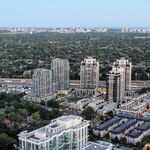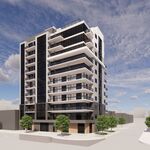Well, they're not paying anything for Spadina now, either. Before this announcement, the city would have had to pay for Finch West itself, something that would have been more than double the cost of Toronto's share of the subway.
So we could either have one subway line, or have a bunch of new LRT lines which would serve MANY more people, and relieve much more congestion. And who's to say that well-built LRT with 4-car long trains won't spur development either?
Every one of these LRT lines will cost at least close to a billion dollars. That will buy quite a substantial amount of subway, especially if you don't build it at the TTC's hyper-inflated costs. I'm not comparing to Madrid or something, either. Even Montreal has built a subway line (with lavish stations) for hundreds of millions less than the TTC quotes.
The "reducing congestion" argument is one conveniently used by politicians proposing new project. Nobody seriously thinks that it will make roads flow any better. I might add that these streetcar projects will likely make many roads flow much worse, since it will mean complex light cycles at every intersection, bans on left turns and turns into driveways, and most of all a reduction in lanes.
"Well-built" is a big if. The TTC has had many chances to build LRT well. Spadina is an utter failure, popular because of its location but abysmal as a transit service. It's wildly unreliable, with vehicles operating on no discernable headway. It's also incredibly slow, sometimes taking longer than half-an-hour to get from Front to Bloor. Even a recent study showed that it isn't any faster than the bus it replaced. I've heard the argument from very sensible people that "At least the infrastructure is there, it can be fixed in the future." Well, it's been well over a decade on Spadina and there's no sign of fixing it. Instead, we want to wallpaper the city in Spadinas. I had confidence, though, that these mistakes would be rectified on St. Clair. We would have real light rail that would actually improve travel times, the real most important criteria for people deciding to take transit (or deciding to take a surface route instead of a parallel subway line). The estimated travel time savings, before the line is even complete, have been revised downward and downward until now they are now virtually nothing. So, at a cost of millions and a lot of enraged neighbours, we have a service that's no faster, and to top it all off will have significantly reduced frequency! Once again, I support the St. Clair project with the highest of hopes, but the TTC just doesn't seem capable of operating light rail routes, however much they like to spend money building them.
I was willing to give them a pass on Spadina, their first try, but St. Clair was supposed to be the showpiece for this new generation of light rail lines. I honestly right now can't see the improvement, certainly not net of the damage caused to the neighbourhood by limiting access to local streets and reducing street parking. Come on, TTC. Show us you're remotely capable of operating these lines before spending $6 billion on new ones.




